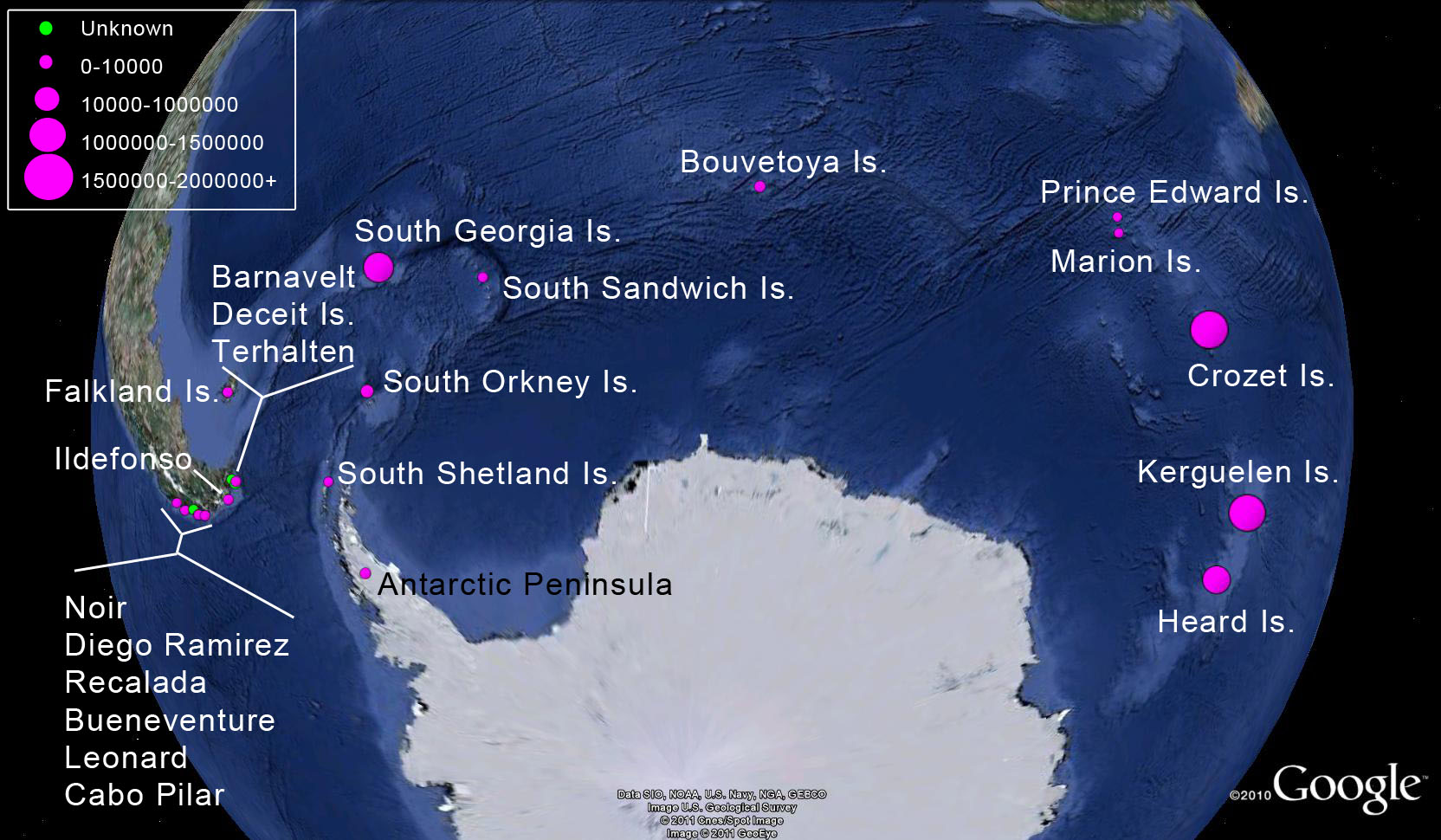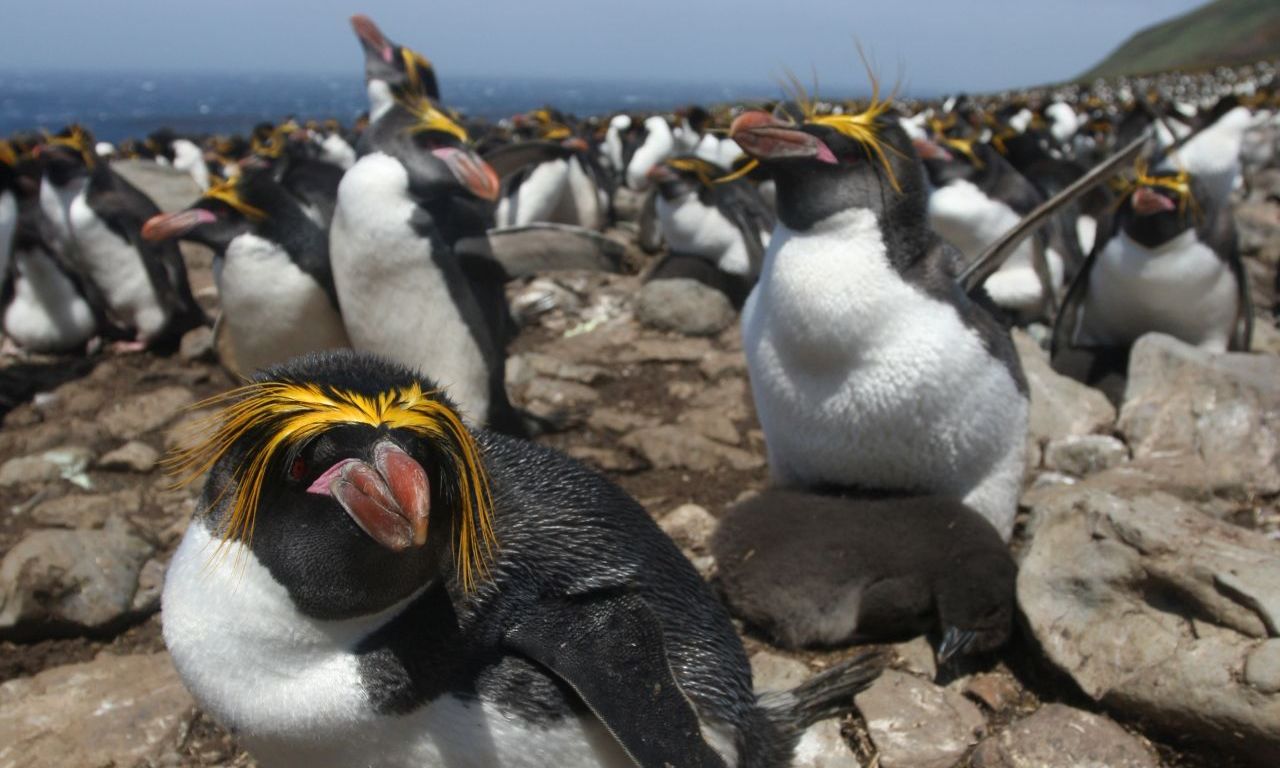Macaroni penguin - Eudyptes chrysolophus
- DESCRIPTION
- Adult Macaroni have black bodies and tails and white underparts . Conspicuous golden-yellow and orange crest feathers. Bill is stout and varies in color from red to orange to brown, the eyes are dark red, and there is a patch of bare pink skin from the base of the bill to the eye. Legs and feet are pink. Macaroni penguins have black faces. Royal penguins are generally larger by 10-20% compared to Macaroni penguins.
- DISTRIBUTION
-
Macaroni penguins are circumpolar in distribution. Breeding colonies are found
on a number of sub-Antarctic islands throughout the South Atlantic and Indian
Oceans between latitudes 46º-65ºS. Ranges during the non-breeding season in
winter are not well known.

- HABITAT
- The breeding colonies for both Macaroni penguins are generally found on steep, rocky scree slopes or on more level open areas with little vegetation. Some Macaroni penguins nest directly in tussock grass (Poa spp.).
- BREEDING BIOLOGY
- After the breeding season, they are dispersive and highly pelagic and can range over 3 million km2 throughout the southern latitudes in winter. Pairs are generally monogamous. Both penguin species exhibit an unusual reproductive strategy characterized by reversed hatching asynchrony and obligate brood reduction with two eggs laid but only one chick fledged.
- FEEDING
- Diet based on euphausid crustaceans and myctophid fishes, and some amphipods and squid. The relative importance and diversity of euphausid and fish components varies geographically. Prey is caught by pursuit-diving normally at depths of 15-60 m, though they may dive as deep as 90 m or deeper. Dives rarely exceed two minutes in duration.
- REPRODUCTIVE POPULATION
- 6,300,000 pairs
- Conservation status (IUCN) and threats
- "Vulnerable" (IUCN Red List 2018). This classification relies heavily on global population estimates extrapolated from small-scale datasets, which at times are incomplete or data deficient for the most recent years.
- SOURCE
- : Crossin, G. T., Trathan, P. N. and Crawford R. J. M. 2013. Pingüino Macaroni (Eudyptes chrysolophus) y Pingüino Real (Eudyptes schlegeli). In: PENGUINS: NATURAL HISTORY AND CONSERVATION (García Borboroglu, P.G. and Boersma, P.D. eds.). University of Washington Press, Seattle, USA. 328 pp.




